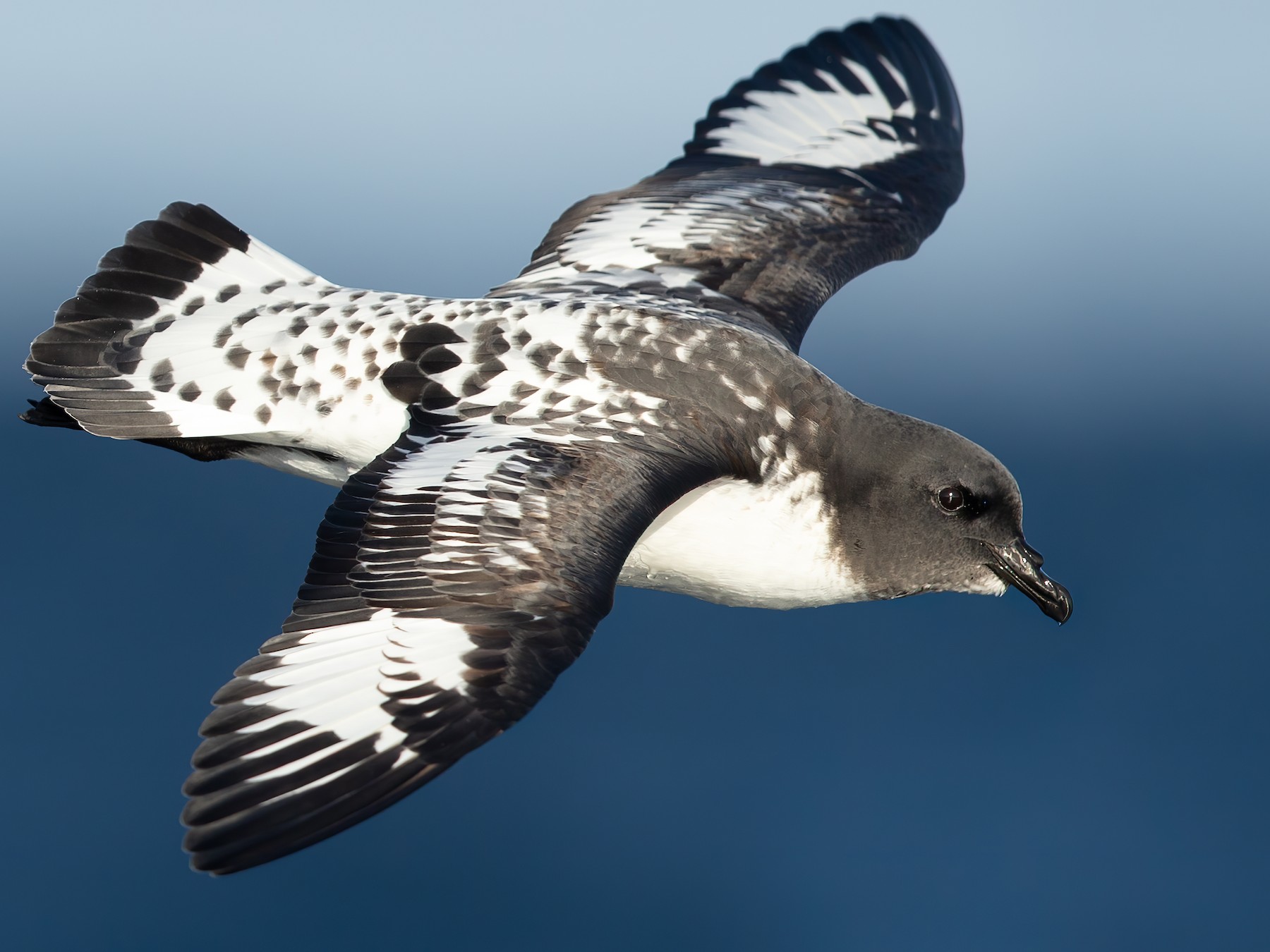The Cape Petrel, scientifically identified as Daption capense, is a remarkable seabird that commands attention in the vast expanses of the South Ocean. Revered by various names such as Cape Pigeon, Pintado Petrel, or Cape Fulmer, this bird belongs to the Procellariidae family. Distinctive in its nature, it stands as the sole representative of the adaption species, sharing kinship with fulmar petrels and giant petrels.
Cape Petrel (Daption capense) Profile: Facts, Traits, Range, Diet
The Cape Petrel emerges as a captivating avian entity, intricately woven into the fabric of the Southern Ocean. Its distinctive characteristics, ecological significance, and numerical prevalence underscore the multifaceted nature of this seabird. As it soars through the open skies and gracefully skims the ocean surface, the Cape Petrel remains a testament to the marvels of nature thriving in the remote corners of our planet.
Ecological Significance
Within the intricate tapestry of the Southern Ocean, the Cape Petrel is a prominent player. It gracefully navigates the azure waves, contributing to the rich biodiversity of its habitat. As a member of the Procellariidae family, it partakes in the delicate balance of marine ecosystems, playing a crucial role in the intricate web of life beneath the ocean’s surface.
Species and Kinship
Diving into the specifics, the Cape Petrel holds a unique status as the only member of the adaption species. This distinction sets it apart in the avian world, making it a subject of fascination for ornithologists and nature enthusiasts alike. Its associations with fulmar petrels and giant petrels add a layer of complexity to its ecological interconnections, highlighting the intricate relationships within the avian community.
Abundance and Population
Widely dispersed across the Southern Ocean, Cape Petrels paint the skies with their distinctive presence. Their ubiquity is reflected in their staggering estimated population, which soars to an impressive 20 million. This abundance is not merely a numerical triumph but signifies the adaptability and resilience of this species in the face of the challenges posed by the dynamic marine environment.
Physical Characteristics
Intriguingly, the Cape Petrel boasts a set of physical attributes that contribute to its success in marine environments. Its plumage, marked with contrasting patterns, earns it the alternative moniker of Pintado Petrel. This unique appearance serves both aesthetic and functional purposes, aiding in its identification and potentially playing a role in its interactions with other members of its species.
Other Recommended Articles
- Crested Blue Swedish Duck – Eggs | Traits | Color
- Black Runner Ducks – Eggs | Fly | Pet | Care | Facts
- Indian Runner Ducklings – Running | Sale | Care
- Blue Runner Ducks – Eggs | Fly | Sale | Pet | Chicks
- Chocolate Runner Duck – Facts | Eggs | Baby | Chicks
- Crested Mallard Duck – Profile | Facts | Eggs | Breeding
- Indian Runner Duck – Eggs | Colors | Lifespan | Care
- Crested Cayuga Duck – Profile | Care | Varieties
- White Crested Duck – Profile | Personality | Facts | Care
- Crested Runner Duck – Care | Profile | Eggs | Ducklings
- Crested Duckling – Breed | Care | Feeding | Profile
- Black Crested Duck – Profile | Eggs | Characteristics
- Crested Pekin Duck – Facts | Profile | Characteristics
- Black-Backed Kingfisher Bird – Profile | Facts
- Kingfisher Diving – How Fast Does A Kingfisher Dive?
- Black and White Kingfisher Bird – Profile | Facts
- American Pygmy Kingfisher Bird Profile
- Philippine Dwarf Kingfisher Bird – Profile | Nest | Threats
- Belted Kingfisher Habitat – Where Does A Belted Kingfisher Live?
- Female Belted Kingfisher – Uniqueness | Characteristics

